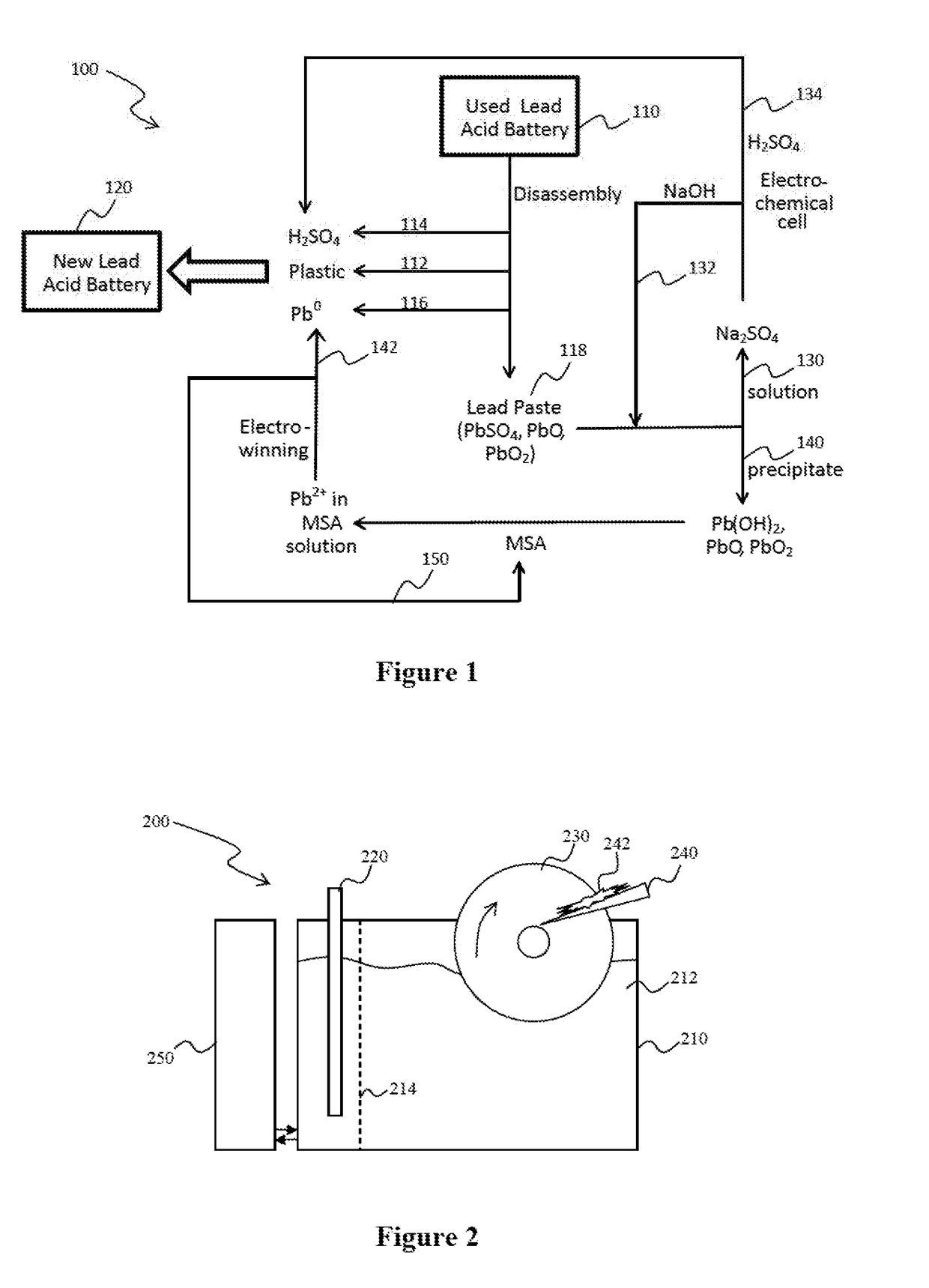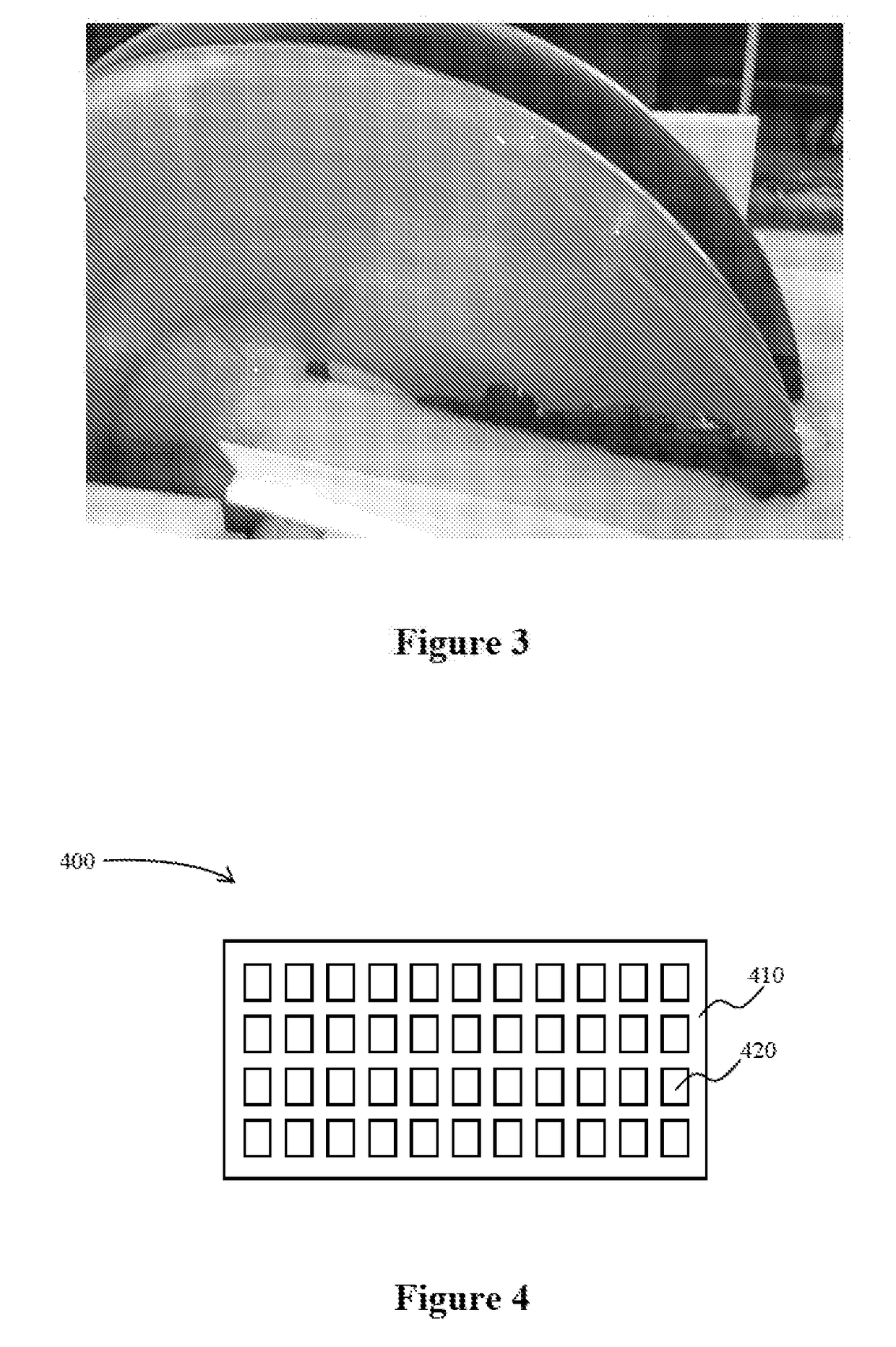Closed Loop Systems and Methods for Recycling Lead Acid Batteries
a closed loop and battery technology, applied in the field of lead acid battery recycling, can solve the problems of complex application, environmental protection, and process description of battery paste, and achieve the effect of slowing down the kinetics of an oxidation reaction
- Summary
- Abstract
- Description
- Claims
- Application Information
AI Technical Summary
Benefits of technology
Problems solved by technology
Method used
Image
Examples
Embodiment Construction
[0032]The inventors have discovered that recovery of lead from lead paste and various other lead-containing materials can be performed in a conceptually simple and effective electrolytic process that not only yields lead in highly pure form, but also allows for continuous operation using a low cost cathode while maintaining anode and solvent integrity. Also, contemplated systems and methods allow for a closed loop process in which all relevant process materials can be recycled and re-used within the process. Most advantageously, and viewed from a different perspective, high-purity lead can be obtained in a continuous process without the need for smelting or other high-temperature processing.
[0033]One exemplary closed loop process 100 is schematically shown in FIG. 1 in which lead acid batteries 110 are disassembled to yield plastic scraps 112, sulfuric acid 114, metallic lead (electrodes / grids) 116, and lead-containing paste 118 that includes PbSO4, PbO, and PbO2. The plastic scrap ...
PUM
| Property | Measurement | Unit |
|---|---|---|
| concentration | aaaaa | aaaaa |
| density | aaaaa | aaaaa |
| particle sizes | aaaaa | aaaaa |
Abstract
Description
Claims
Application Information
 Login to View More
Login to View More - R&D
- Intellectual Property
- Life Sciences
- Materials
- Tech Scout
- Unparalleled Data Quality
- Higher Quality Content
- 60% Fewer Hallucinations
Browse by: Latest US Patents, China's latest patents, Technical Efficacy Thesaurus, Application Domain, Technology Topic, Popular Technical Reports.
© 2025 PatSnap. All rights reserved.Legal|Privacy policy|Modern Slavery Act Transparency Statement|Sitemap|About US| Contact US: help@patsnap.com


